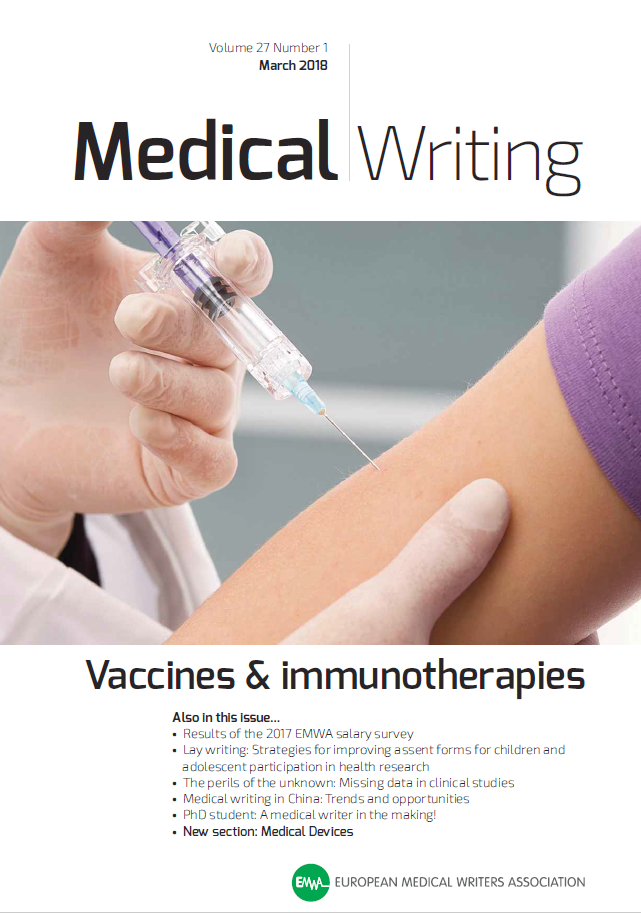
Volume 27, Issue 1 - Vaccines and Immunotherapies
Changing methods to assess targeted therapies in oncology
Authors: Trevor Stanbury, Bernard Asselain, Xavier Paoletti
Abstract
New methods have been developed to evaluate targeted therapies, since the classic sequence – phase I, toxicity; phase II, efficacy; phase III, comparison with standard treat ment – is no longer effective for evaluating these new treatments. In traditional cytotoxic chemotherapy trials, we observe a positive correlation between dose toxicity and dose efficacy. In targeted therapy trials, however, high doses can sometimes be well tolerated and increasing the dose beyond a certain level does not increase tumour response. Early clinical trials in targeted therapies therefore need to simultaneously assess toxicity and provide early signals of efficacy, based on biomarkers when available. Phase II primary endpoints have also been questioned, since the RECIST (Response Evaluation Criteria in Solid Tumour) is not well suited to functional modifications in tumours. New phase III trials, with more homogeneous targeted populations, are using more flexible designs, including interim analyses and adaptive designs. These flexible designs allow the sample size, and sometimes the trial design, to be modified during the trial. This article discusses these new methodological challenges for evaluating targeted therapies.
 Download the full article
Download the full article
References
- Hansen AR, Graham DM, Pond GR, Siu LL. Phase 1 trial design: is 3 + 3 the best? Cancer Control. 2014;21(3):200–8.
- Postel-Vinay S, Gomez-Roca C, Molife LR, Anghan B, Levy A, Judson I, et al. Phase I trials of molecularly targeted agents: should we pay more attention to late toxicities? J Clin Oncol. 2011;29(13):1728–35.
- Robert C, Ribas A, Wolchok JD, Hodi FS, Hamid O, Kefford R, et al. Antiprogrammed- death-receptor-1 treatment with pembrolizumab in ipilimumabrefractory advanced melanoma: a randomised dose-comparison cohort of a phase 1 trial. Lancet. 2014;384(9948):1109–17.
- Menis J, Litiere S, Tryfonidis K, Golfinopoulos V. The European Organization for Research and Treatment of Cancer perspective on designing clinical trials with immune therapeutics. Ann Transl Med. 2016;4(14):267.
- Dahlberg SE, Shapiro GI, Clark JW, Johnson BE. Evaluation of statistical designs in phase I expansion cohorts: the Dana-Farber/Harvard Cancer Center experience. J Natl Cancer Inst. 2014;106(7).
- Bryant J, Day R. Incorporating toxicity considerations into the design of two-stage phase II clinical trials. Biometrics. 1995;51(4):1372–83.
- Rubinstein L. Phase II design: history and evolution. Chin Clin Oncol. 2014;3(4):48.
- Saad ED, Paoletti X, Burzykowski T, Buyse M. Precision medicine needs randomized clinical trials. Nat Rev Clin Oncol. 2017;14(5):317–23.
- Ledermann J, Harter P, Gourley C, Friedlander M, Vergote I, Rustin G, et al. Olaparib maintenance therapy in platinumsensitive relapsed ovarian cancer. N Engl J Med. 2012;366(15):1382–92.
- Mok TS, Wu YL, Thongprasert S, Yang CH, Chu DT, Saijo N, et al. Gefitinib or carboplatin-paclitaxel in pulmonary adenocarcinoma. N Engl J Med. 2009;361(10):947–57.
- Van Cutsem E, Lenz HJ, Kohne CH, Heinemann V, Tejpar S, Melezinek I, et al. Fluorouracil, leucovorin, and irinotecan plus cetuximab treatment and RAS mutations in colorectal cancer. J Clin Oncol. 2015;33(7):692–700.
- Taieb J, Tabernero J, Mini E, Subtil F, Folprecht G, Van Laethem JL, et al. Oxaliplatin, fluorouracil, and leucovorin with or without cetuximab in patients with resected stage III colon cancer (PETACC- 8): an open-label, randomised phase 3 trial. Lancet Oncol. 2014;15(8):862–73.
- Paoletti X, Asselain B, Kamal M, Servant N, Huppe P, Bieche I, et al. Design and statistical principles of the SHIVA trial. Chin Clin Oncol. 2015;4(3):32.
- Le Tourneau C, Kamal M, Tredan O, Delord JP, Campone M, Goncalves A, et al. Designs and challenges for personalized medicine studies in oncology: focus on the SHIVA trial. Target Oncol. 2012;7(4): 253–65.
Search
Articles
Links
Editoral Board
Editor-in-Chief
Co-Editors
Managing Editor
Victoria White
Deputy Managing Editor
Alicia Brooks Waltman
Associate Editors
Section Editors
AI/Automation
Biotechnology
Digital Communication
EMWA News
Freelancing
Gained in Translation
Getting Your Foot in the Door
Good Writing Practice
Pablo Izquierdo / Alison McIntosh
In the Bookstores
Publications
Medical Communications/Writing for Patients
Medical Devices
My First Medical Writing
News from the EMA
Pharmacovigilance
Regulatory Matters
Regulatory Public Disclosure
Louisa Ludwig-Begall / Sarah Kabani
The Crofter: Sustainable Communications
Veterinary Writing
Editors Emeritus
Layout Designer
Chris Monk
 Visit the EMWA website
Visit the EMWA website